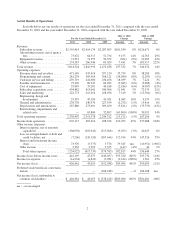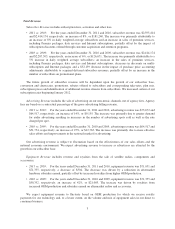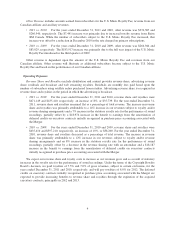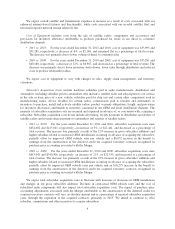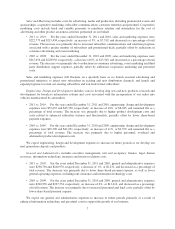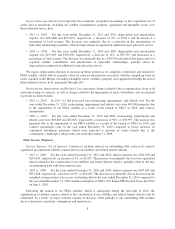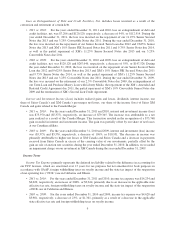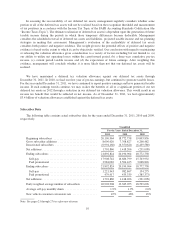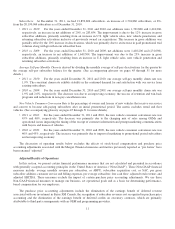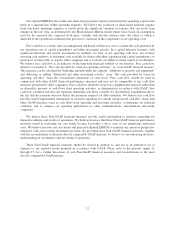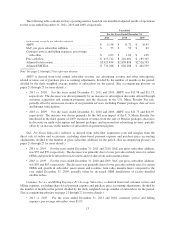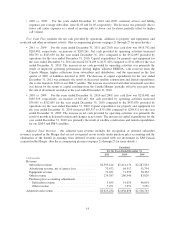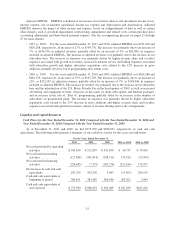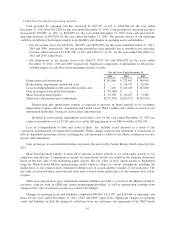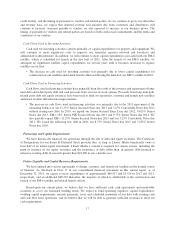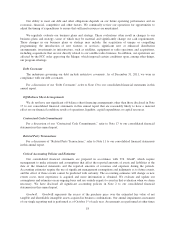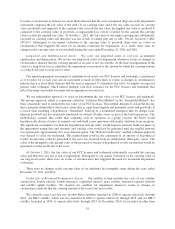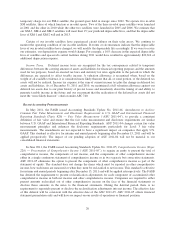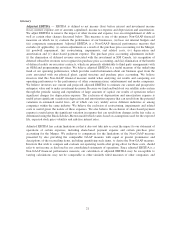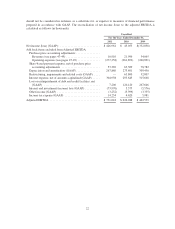XM Radio 2011 Annual Report Download - page 68
Download and view the complete annual report
Please find page 68 of the 2011 XM Radio annual report below. You can navigate through the pages in the report by either clicking on the pages listed below, or by using the keyword search tool below to find specific information within the annual report.Our adjusted EBITDA also reallocates share-based payment expense from functional operating expense line
items to a separate line within operating expenses. We believe the exclusion of share-based payment expense
from functional operating expenses is useful given the significant variation in expense that can result from
changes in the fair value as determined by the Black-Scholes-Merton model which varies based on assumptions
used for the expected life, expected stock price volatility and risk-free interest rates; the effect of which is
unrelated to the operational conditions that give rise to variations in the components of our operating costs.
Free cash flow is a metric that our management and Board of Directors use to evaluate the cash generated by
our operations, net of capital expenditures and other investment activity. In a capital intensive business, with
significant historical and current investments in satellites, we look at our operating cash flow, net of these
investing cash outflows, to determine cash available for future subscriber acquisition and capital expenditures, to
repurchase or retire debt, to acquire other companies and to evaluate our ability to return capital to stockholders.
We believe free cash flow is an indicator of the long-term financial stability of our business. Free cash flow,
which is reconciled to “Net cash provided by (used in) operating activities”, is a non-GAAP financial measure.
This measure can be calculated by deducting amounts under the captions “Additions to property and equipment”
and deducting or adding “Restricted and other investment activity” from “Net cash provided by (used in)
operating activities” from the consolidated statements of cash flows. Free cash flow should be used in
conjunction with other GAAP financial performance measures and may not be comparable to free cash flow
measures presented by other companies. Free cash flow should be viewed as a supplemental measure rather than
an alternative measure of cash flows from operating activities, as determined in accordance with GAAP. Free
cash flow is limited and does not represent remaining cash flows available for discretionary expenditures due to
the fact that the measure does not deduct the payments required for debt maturities. We believe free cash flow
provides useful supplemental information to investors regarding our current and projected cash flow, along with
other GAAP measures (such as cash flows from operating and investing activities), to determine our financial
condition, and to compare our operating performance to other communications, entertainment and media
companies.
We believe these Non-GAAP financial measures provide useful information to investors regarding our
financial condition and results of operations. We believe investors find these Non-GAAP financial performance
measures useful in evaluating our core trends because it provides a direct view of our underlying contractual
costs. We believe investors use our current and projected adjusted EBITDA to estimate our current or prospective
enterprise value and to make investment decisions. By providing these Non-GAAP financial measures, together
with the reconciliations to the most directly comparable GAAP measure, we believe we are enhancing investors’
understanding of our business and our results of operations.
These Non-GAAP financial measures should be viewed in addition to, and not as an alternative for or
superior to, our reported results prepared in accordance with GAAP. Please refer to the glossary (pages 21
through 27) for a further discussion of such Non-GAAP financial measures and reconciliations to the most
directly comparable GAAP measure.
12


